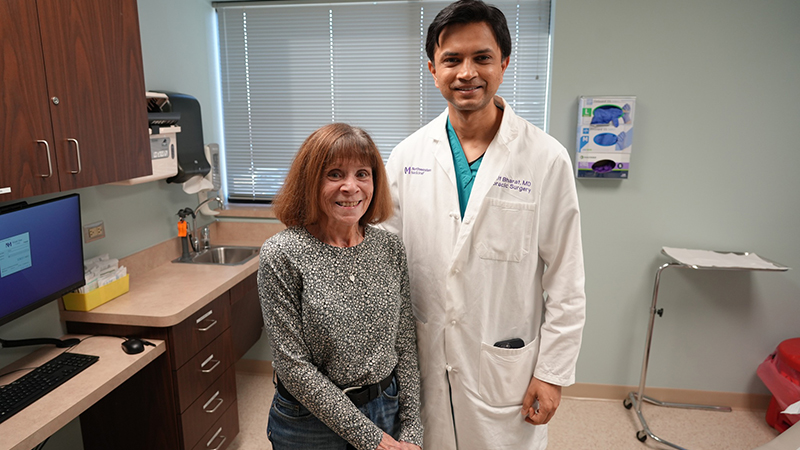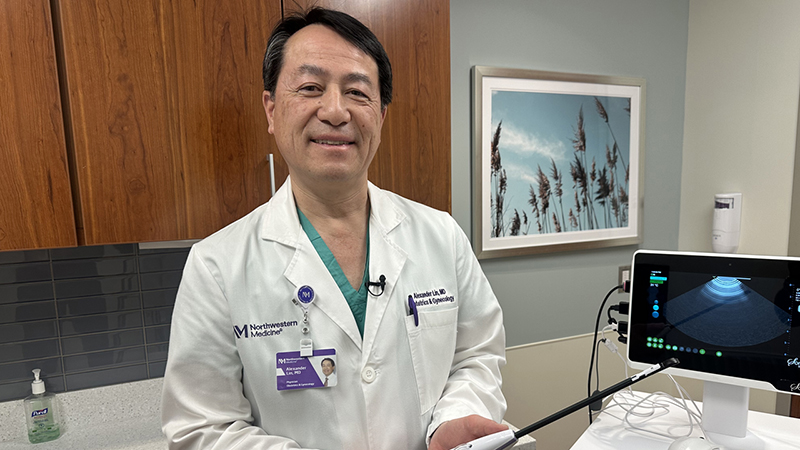Stunting the Spread of MLL
The Molecular Therapy That May Halt Pediatric Leukemia
This article was originally published in the Northwestern University Feinberg School of Medicine News Center.
Northwestern Medicine scientists have discovered the genetic driver of a rare and lethal childhood leukemia and identified a targeted molecular therapy that halts the proliferation of leukemic cells.
Mixed lineage leukemia (MLL) primarily strikes newborns and infants. Less than 10 to 20 percent of those children (300 cases are seen in the United States per year) live no more than five years after being diagnosed.
MLL is caused when a piece of genetic material breaks off from its original location and attaches itself to another, different place in a cell’s nucleus, an abnormal process called “translocation.”
“We’ve spent the last 20 years trying to molecularly understand how MLL translocations cause this rare and devastating form of leukemia in children so that we can use this information to develop an effective therapy for this cancer,” said lead investigator Ali Shilatifard, PhD, Robert Francis Furchgott Professor and chair of Biochemistry and Molecular Genetics at Northwestern University Feinberg School of Medicine. “Now we’ve made a fundamentally important breakthrough.”
Shilatifard, who is also a professor of Pediatrics and a member of the Robert H. Lurie Comprehensive Cancer Center of Northwestern University, worked with graduate student and first author Kevin Liang and other colleagues at Feinberg. The team is extremely hopeful about this breakthrough and is in the process of pushing their findings into clinic for the treatment of childhood leukemia.
“Mixed lineage leukemia is caused when an errant chromosome 11 on the MLL gene breaks and attaches to other chromosomes such as chromosome 19, where it doesn’t belong,” said Liang. “The mutation produces a protein that drives the pathogenesis of leukemia.”
Most research related to this cancer has focused on the errant version of chromosome 11. But there are two copies of chromosome 11, and the Shilatifard group wanted to investigate the wild-type version. Shilatifard’s laboratory discovered that individual cells with the pediatric leukemia had extremely low levels of a protein produced by the wild-type MLL gene. Shilatifard and Liang reasoned if they could beef up the levels of the wild-type MLL protein, it would displace the mutated version that drives cancer, and it could cure leukemia.
Through their detailed molecular and biochemical screens, Shilatifard’s lab identified a compound that stabilized the wild-type MLL and interfered with the mutant protein driving leukemia. To test its effectiveness, they grew mixed lineage leukemia cells in a culture and transplanted them into mice, in collaboration with the lab of John Crispino, PhD, Robert I. Lurie, MD, and Lora S. Lurie Professor of Medicine in the Division of Hematology/Oncology. They then injected the therapeutic compound into the mice. The result: the wild-type MLL bounced back to healthy levels, and the leukemic cells were not able to grow as rapidly.
Northwestern Medicine scientists are now synthesizing better compounds and hope to eventually launch a Phase I trial to test these compounds in Chicago. While MLL is the primary focus, the research also has implications for treating other types of cancer.





